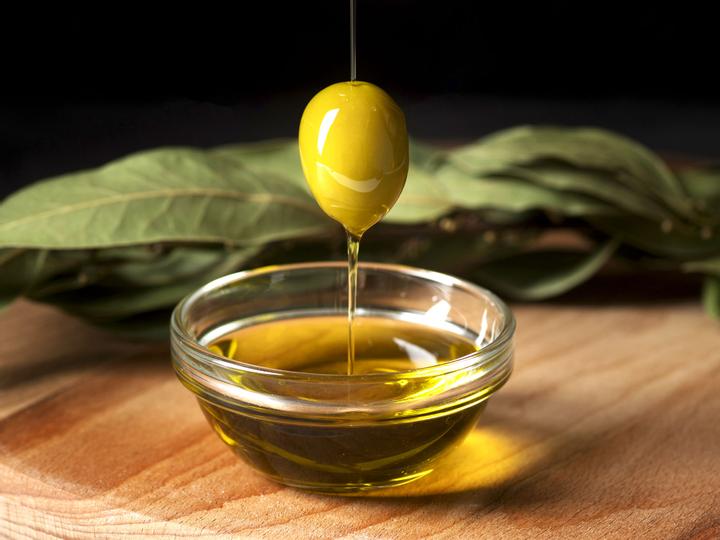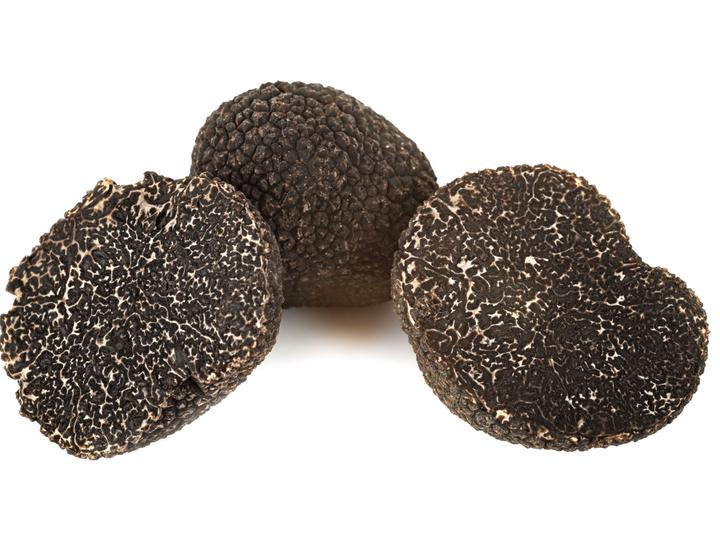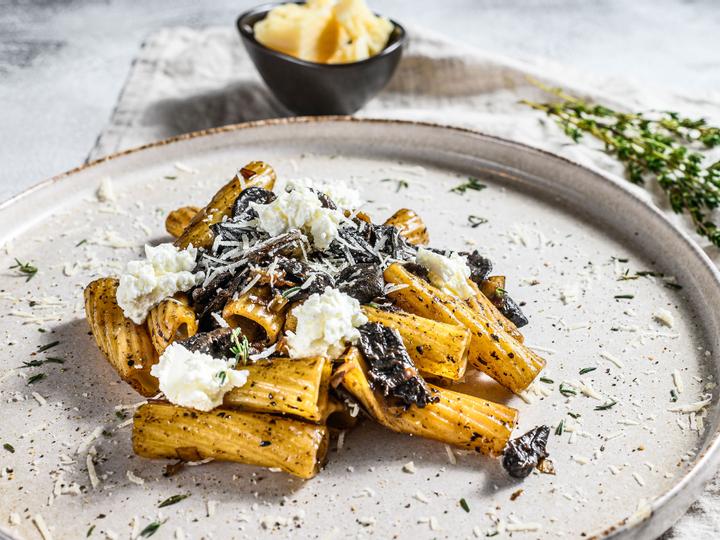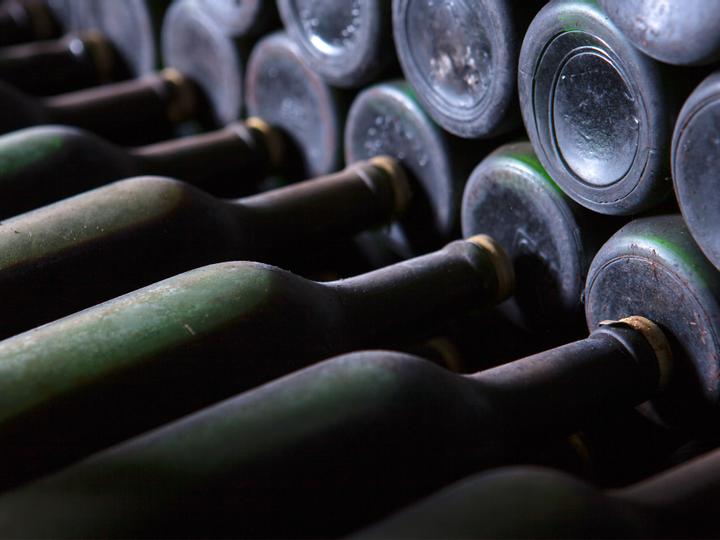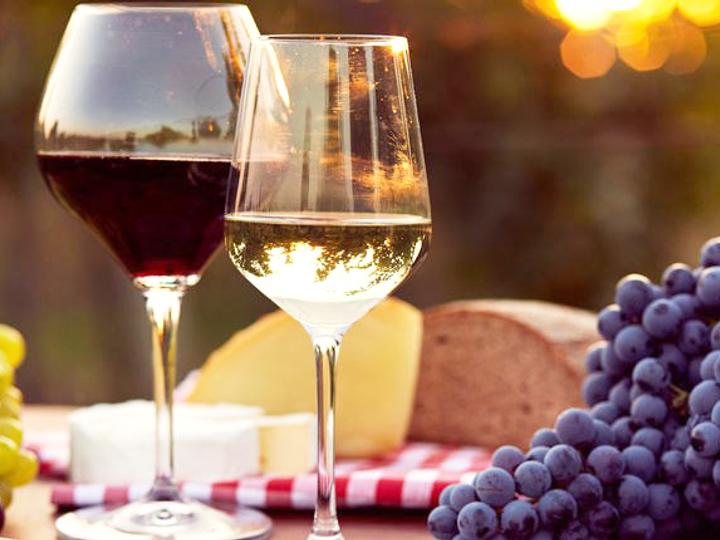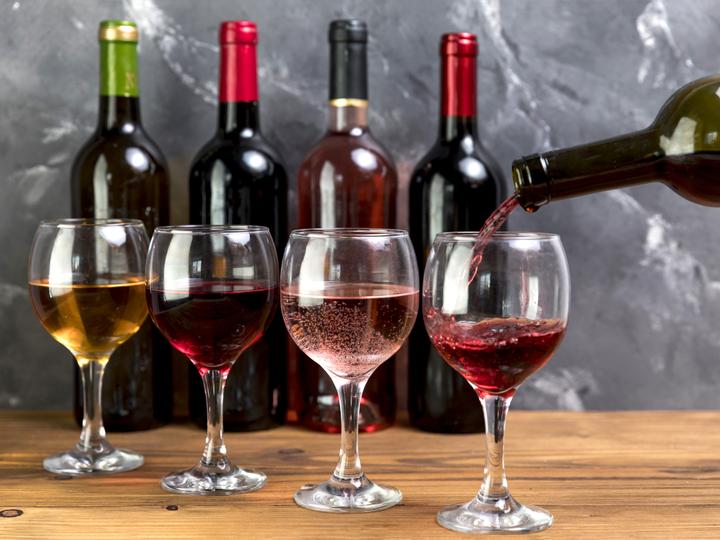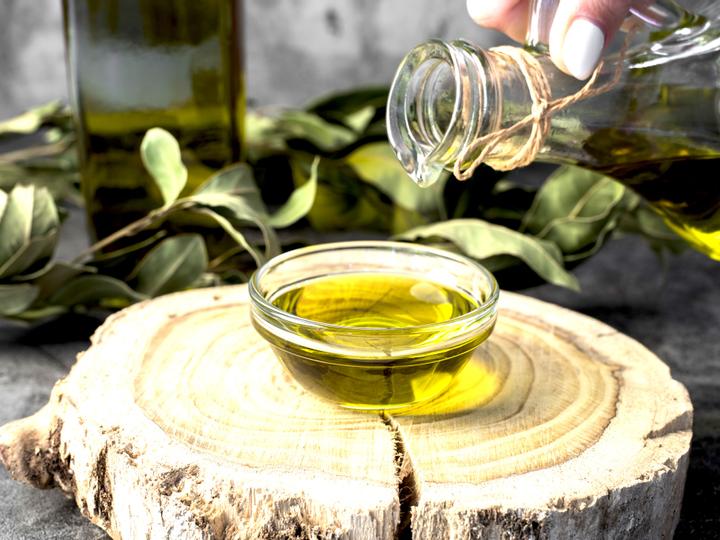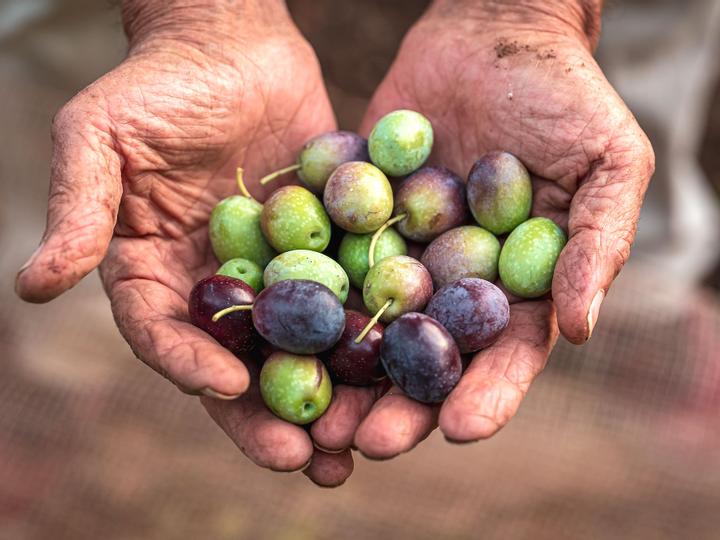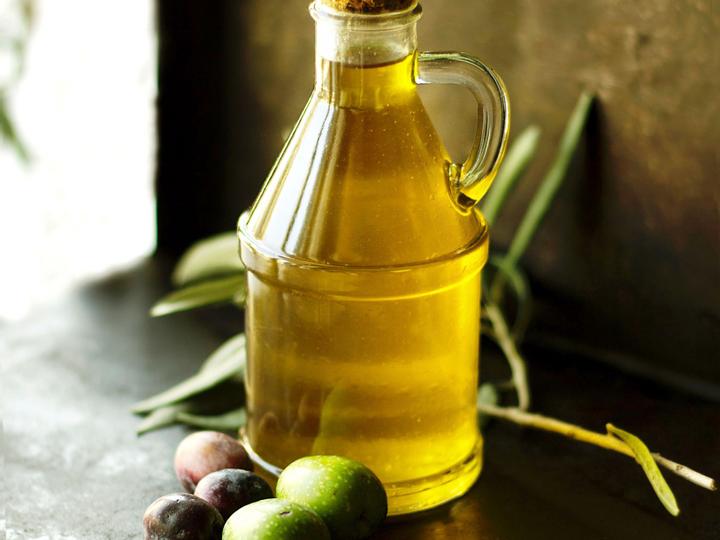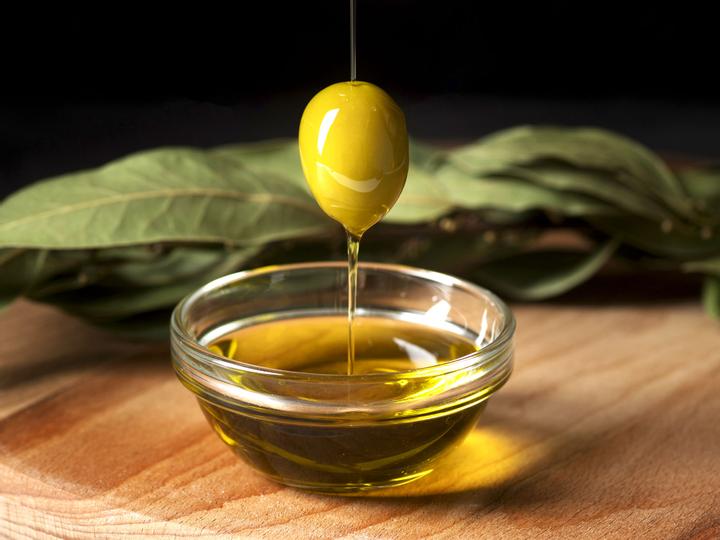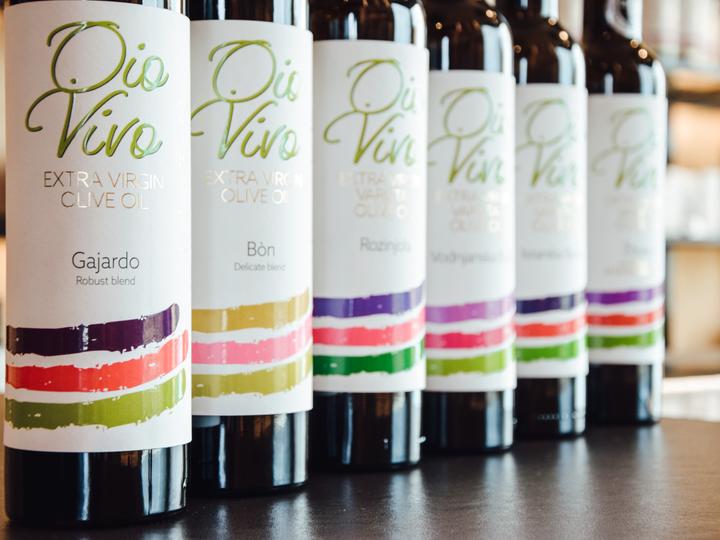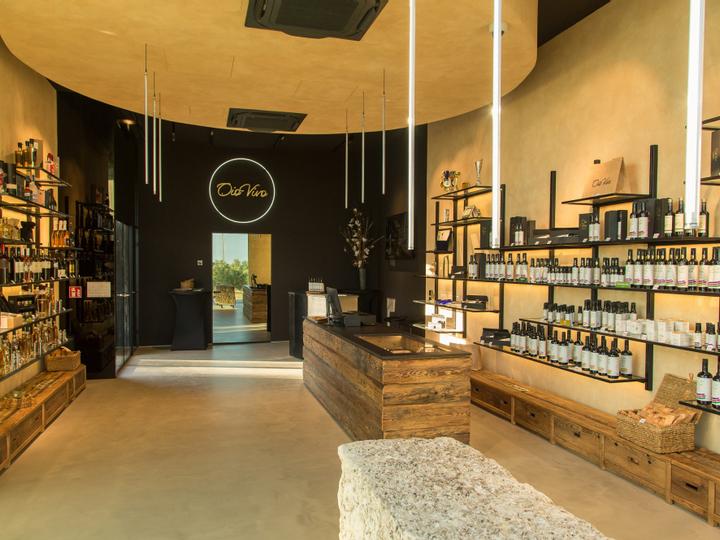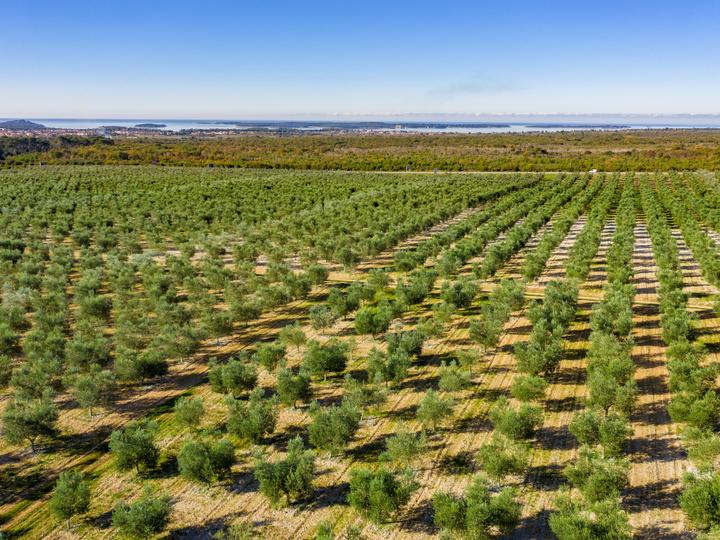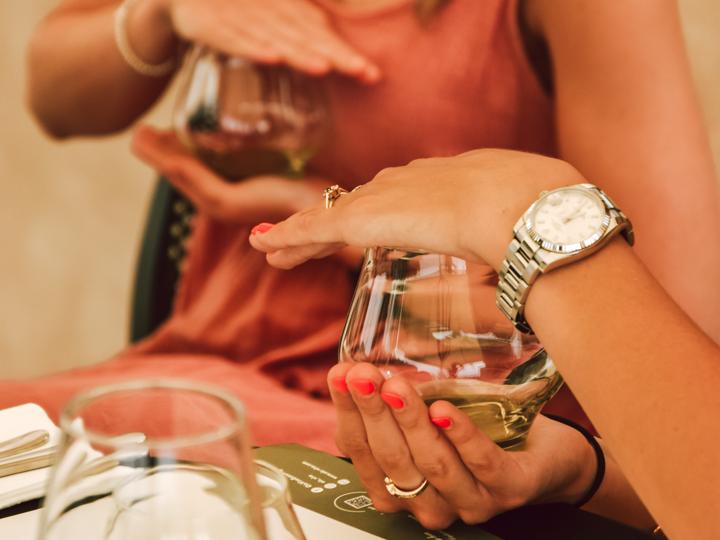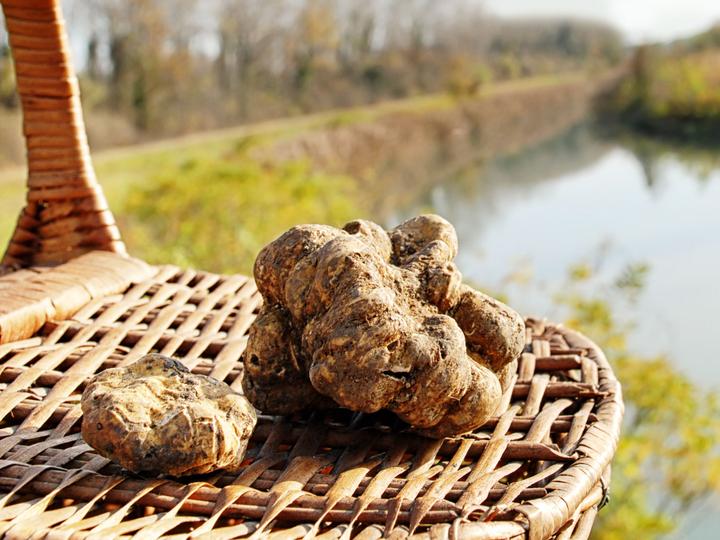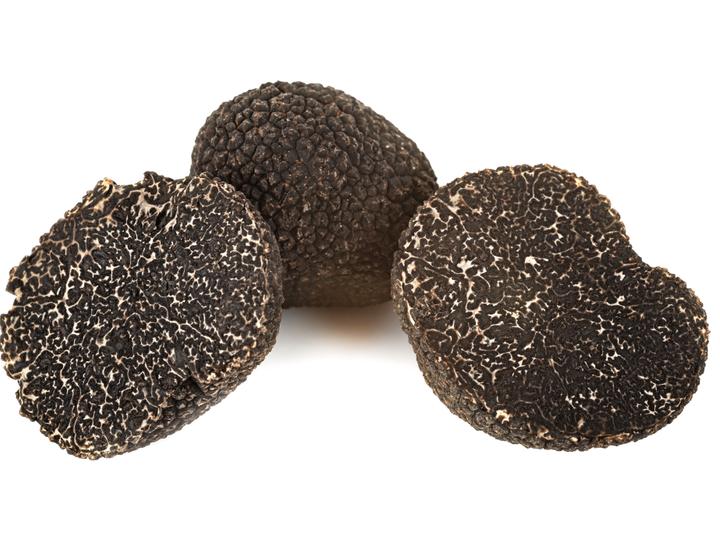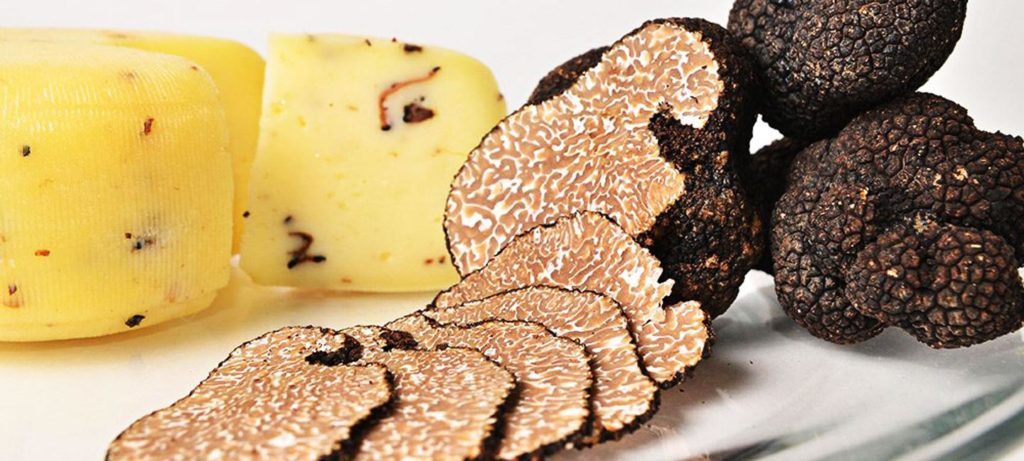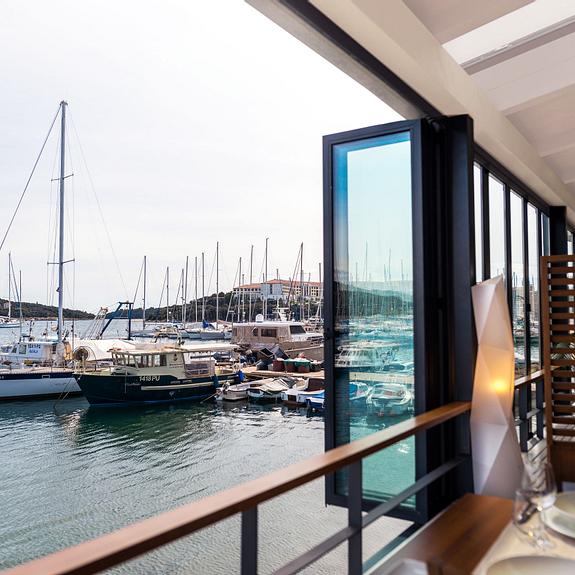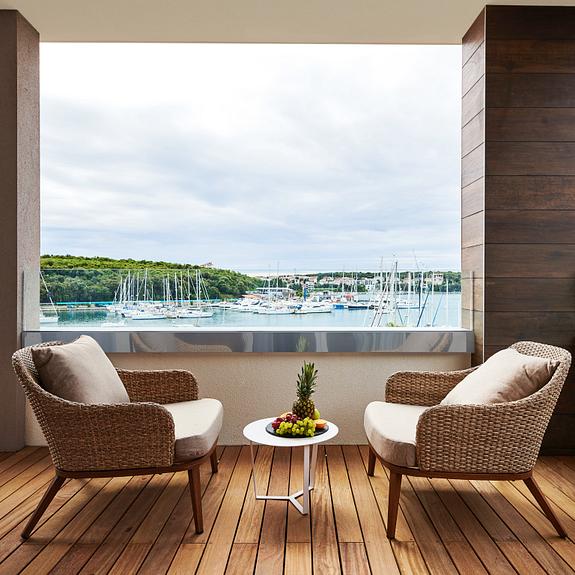lokaler Geschmack
Content Blocks
Local specialities
Find out what makes istrian cousine so unique
Olive oil
There's not a single dish in Istria that is made without olive oil. Olive oil may have a bitter taste; nevertheless, it is widely considered an elixir of health and a superfood. Istrian olive oil is famous in the whole world. Five years in a row, the region of Istria is acknowledged as the best extra virgin olive oil region worldwide. Superb soil, excellent climate, and centuries-old tradition, mixed with modern technology, is the secret combination for this oil. This is why Istrian olive oil growers are respected worldwide.
Wines
Several proverbs perfectly convey what Istrian wine means to the Istrian man. “Bread is for the body; wine is for the soul.” is just one of them. Due to the unique soil, proximity to the sea, and mild Mediterranean climate, Istria is known as Croatia's best wine region. The queen of Istrian wines is Malvasia. Its scent reminiscent of acacia flower, refined aroma, and fresh taste goes perfectly with fish and seafood. The second most famous wine is Teran, both indigenous and the oldest wine in Istria, and mentioned since Roman times. It perfectly complements meat dishes and homemade stews. In addition to Malvasia and Teran, there is a rise of Muscat wine on many local restaurants' tables. Its sweet taste makes for an ideal ending to a meal, especially with dessert.
Truffles
Istrian white truffle is one of the Istria trademarks, appreciated all over the world. We can find them in almost all valleys of Istria, but most of them are in the woodlands along the river Mirna's valley. Only with the help of trained dogs or trained domestic pigs this precious mushrooms can be found. Due to their unique aroma and taste, they are a perfect addition to various traditional and local dishes. Dishes traditionally prepared in Istria with truffles are Istrian fuži (homemade pasta), frittata, and truffle spread.
Istrian prosciutto
The tradition of fattening, slaughtering, then preparing, salting, and drying prosciutto is what makes Istrian prosciutto different from others. It is mostly produced in the rural parts of Istria due to more favorable climatic conditions. One of the Istrian prosciutto's main characteristics is Istrian favorable natural conditions. Winds from the north and northeast and the east wind blowing from Učka create an ideal environment for Istrian cuisine's traditional pearl. You will hardly find a restaurant that does not offer homemade Istrian prosciutto and is most often eaten as an appetizer.
Traditional pasta
Istrians have always been diligent people living a modest life. This is why the gastronomy of the Istrian region is modest, but that doesn't make it any less delicious. The Istrians appropriated many Italian dishes due to Italy's significant influence on the whole of Istria. But they prepared it in their own way, following their abilities. The most famous Istrian pastas are fuži, pljukanci, and potato gnocchi.
Boškarin meat
Boškarin is a traditional Istrian cattle and one of the symbols of the Istrian region. While in other parts of Croatia, horses or donkeys were used to plow the fields, in Istria, this work was done by boškarin. Today, boškarins are grown exclusively for gastronomy. From start to finish, the meat is grown in controlled conditions, and anyone who decides to try this delicacy can expect top gourmet quality. The most famous boškarin delicacies are carpaccio, boškarin meat with homemade fuži or pljukanci, and boškarin steak.
Istrian wild asparagus
Due to its unique bitter taste, asparagus is a real delicacy not only in Istrian cuisine but also in restaurants worldwide. Wild asparagus, which can be found in Istria and the Adriatic islands in the spring, is simple and easily accessible food found on every Istrian table during ripening. The most famous delicacies are frittata with asparagus, asparagus soup, and risotto with asparagus.
Cheese
Various homemade types of cheese are heaven for foodies wishing to taste traditional products. Family cheese factories produce many types of dairy products, such as liquid yogurt, sour cream, fresh cow's lean cheese, cow's, sheep's and goat's cheese, cow's hard cheese, cheese with truffles, olives or peppers. Also, do not forget to try the most famous and “loudest” Istrian cheese, škripavac (eng.: squeaky cheese).
Wine tasting
Discover Istria, the beautiful Croatian region, through wine tours that blend gastronomy and cultural experiences.
Istria is region with rich and well-known wine tradition. Wine tours are best way to discover both gastronomy and cultural tradition of Istria.
Istria has more than 100 wineries that spread over the peninsula. Winemakers are very proud of their grape varieties Istrian Malvazija, Teran, Muscat of Momjan, and Borgonja.
Stancija Menenghetti
Experience luxurious wine tasting at Meneghetti wine hotel & winery. Plan a visit to this beautiful estate and get a taste of authentic local wines from southern Istria.
Kozlović winery
Spoil your palates with Kozlović wines. Spend the day tasting wines, exploring wine cellars, and enjoying the surroundings of Kozlović vineyards.
Kabola wine tasting
Visit Kabola winery in Momjan and have a professional wine tasting tour. Spend the day in this peaceful estate surrounded by vineyards and olive oil trees.
Benazic Winery
Family owned winery in Pula where you can taste premium Istrian wines as well as other delicious Istrian products.
Matošević wine tasting
Discover the small family-run winery Fameja Matošević near Rovinj, and taste local authentic wines of the utmost quality.
Olive oil tasting
Try authentic olive oil tasting in the Museum of Olive oil in Pula
Museum of olive oil in Pula
The Museum of olive oil in Pula offers unique and authentic olive oil tasting experience. You will get to know the story of olive growing in Istria, learn about particular aromas and tastes to look for, and amaze your senses with the most used cooking ingredient in the Mediterranean.
How to get from Ribarska Koliba Rsort to the Museum of olive oil?
The Museum is located in the center of Pula and it is easily accessible by car, only a 10 minute ride from Ribarska Koliba. Our staff can organize a taxi transfer for you. After your visit ends, we can arrange a pick-up transfer for you and your family.
Duration of the visit to the Museum of olive oil
Visit duration depends on the program you choose and it could be one to three hours. In order to be comfortable and learn about the Istrian history of olive growing at your own pace, take at least half an hour, while olive oil tasting should take 60 to 90 minutes. Take some time in their nicely decorated shop to pamper yourself by choosing the perfect bottle of extra virgin olive oil, but also other top products such as Istrian pasta, grappa or truffles.
What to experience in the Museum of olive oil?
Reveal the secrets of olive processing from ancient Roman time up to present by visiting the Museum's exhibition. You will have an exclusive opportunity to learn everything about this highly valued product with their audio-guide in 12 languages. Expand your knowledge with information about what olive oil roads are, where can you find them and about olive oil nutritional benefits.
Reward the hedonist in you and give olive oil tasting a try. It is a unique experience imbued with the finest Istrian flavors and aromas. Led by a trained expert, learn the proper way to taste olive oil and choose from a large selection of top quality Istrian extra virgin olive oils. Also learn how to differentiate quality olive oils from industrially produced and understand the difference in native cultivars like Istrian bjelica, buža, rosignola, leccino and žižolera.
Armed with new knowledge, you are ready for the last station of your olive oil adventure - tastefully designed shop. Pick between many local and world awarded olive oils, Istrian pasta, grappa, truffle products, lavender based cosmetics, unique souvenirs and jewelry made of olive wood. All of these are also great gifts to your friends and family.
Note: you can choose between three different programs - regular visit to the Museum with no tasting, “Green experience” which includes Museum and guided basic olive oil tasting or “Gold experience” including Museum, guided tasting with additional 5 top olive oils tasting and a surprise dessert. If you are a parent, leave your children entertained at the kids corner.
OIO VIVO extra virgin olive oil
The largest Oio Vivo olive grove in Southern Istria is home to over 15000 olive trees that overlook the ancient city of Pula, the Brijuni archipelago and the medieval town of Vodnjan.
Plan your visit to Oio Vivo estate, where you will experience the enduring Istrian tradition of olive growing and unique moments of magical walk through the boundless "green sea". If you would like to learn more about the olive oil production in Istria or become a skillful olive oil taster, you can take a part in one of the tasting programs
The gourmet shop at Oio Vivo is a real treasure for all the hedonists that love local products and want to bring the tastiest souvenir back home!
Reservations are necessary for tasting tours. info@oio-vivo.com
Oio Vivo website: https://oio-vivo.com/en/
Local markets
Taste the products of the Istrian farming by visiting Pula’s farmers’ markets
THE MAIN MARKET
The most famous Pula’s market was open in 1903 during the Austro-Hungarian Monarchy. It is recognizable by its iron construction as it is called the most beautiful Croatian farmers’ market. The outdoor area of the market is covered by the shade of an old chestnut alley. There are stands with fruits, vegetables, olive oil and homemade liquors. Inside the building you can find stands with fresh fish, meat and cheese. The market is not just a grocery store, but a place for walks, morning coffee and socializing with people. There is a great chance that you will stumble upon cultural events which are often held on the market square.
VERUDA MARKET
The market in Veruda contains everything as the main market in the city center, although it is somewhat smaller. You can find butcher shops, stands with fruits and vegetables, as well as dairy and bakery products there. If you want to feel like a local, enjoy your morning coffee in the popular café outdoor. The King Tomislav Square right next to the market has been renovated and equipped with new children's playgrounds, so the atmosphere is always lively. At the Square, entertaining events are held during the summer.
ECO MARKET
Istria is the leading domestic region in ecological production. In response to meeting the needs of organic farmers for the place of product placement, but also the needs of consumers for organic food, solidarity organic markets were created. One of those markets where you can buy organic goods is Eco market located in Šijana near the main bus station in Pula. While buying home-grown products, experience domestic atmosphere by mingling with locals. The market is open in the evening hours on Tuesdays.
Ecotourism
Discover Green Istria through numerous ecotourism experiences and enjoy the peninsula’s most authentic places in a sustainable way.
Visit protected areas of nature, try original products from eco- producers, learn about culture and history from carefully curated museum exhibits and experiences, swim in the clear blue sea. Meet Green Istria!
Eco-producers in Istria
Istria is a real paradise for any foodie and lover of authentic Mediterranean cuisine. With hundreds of quality winemakers and producers of renowned extra virgin olive oil, there are also many of them certified as eco-producers of fresh, organic vegetables. For a real foodie experience, we recommend visiting few selected agritourism locations, where you can experience Green Istria.
Protected areas of amazing nature in Istria
Istria has many amazing areas of protected nature that spread all across the peninsula. You can visit most of them in an ecological, sustainable way. The most breathtaking areas in the close vicinity of Pula are Brijuni National Park and Cape Kamenjak. Closer to Rovinj, you can visit the impressive Lim bay and the nearby Kontija Forrest. The most majestic example of karst terrain in Istria is the Pazin cave - which can be visited and experienced over a zipline or an underground speleo adventure. Hiking and cycling lovers can discover Istria through many trails, but we recommend the legendary Parenzana route. The Učka mountain range offers many exciting trails, and the views from the top are the most unforgettable ones.
Blue-flag and green beaches in Istria
Istria, the pearl of Mediterranean, prides itself on the clear water of high quality and amazing beaches. Several beaches in Istria are marked with blue flags and tagged as green beaches. Most of the blue flag beaches in Istria are in the area of Poreč, Umag, and Novigrad, but the rest of the peninsula’s coast has them, too. Green beaches in Istria are selected according to several sustainability elements, and currently, there are only three of them: Girandella in Rabac, Karpinjan in Novigrad, and City beach in Poreč.
Discover Istria in a completely sustainable way and spend your holiday like a true local. Our reception staff will gladly give you first-hand recommendations and help you plan your time.
Truffle hunting in Istria
Try yourself in truffle hunting and get deep into the forests nestled between the hills of Northern Istria. The Karlić family is one of the most renowned in the truffle business in Istria. Spend the day and learn from first-hand how to search, hunt, and prepare truffles into authentic Istrian meals.
How to get from Pula to Karlić truffles?
The most convenient way to reach the village of Paladini is to take the highway and exit at Nova Vas. Continue on the local road to the village of Paladini.
You will be driving along the straight road along the Mirna valley, enjoying sceneries of endless meadows, dense vegetation, and nearby hilltop towns.
Duration of the visit to Karlić truffles
For the best and unobstructed experience of truffle hunting in Istria, we suggest you make this a full day trip. Take the day to enjoy scenic routes in Istria, experience truffle hunting, and later trying tasty truffle Istrian meals.
What to see at Karlić truffles?
The village of Paladini is set on the top of the hill overlooking Northern Istria. Gaze at the impressive Učka mountain range in the background, or calm your eyes on the sights of the nearby Butoniga village.
Since recently, the Karlić family has a tasting room built with glass walls that offer breathtaking views in all of Istria. It is worth visiting even if you are not going truffle hunting.
What does the truffle hunting experience include?
Get ready for an adventure in the forests of Northern Istria. During your tour, you will learn about the truffle hunting business, training dogs, and the actual hunt. If you are lucky enough, you will dig up your own truffle that will, after the hunt, become a delicious meal prepared by the Karlić family.
Note: the truffle hunting experience requires an advance reservation. Make sure to have appropriate clothes and shoes.


